X-explore In-depth study of the behavior patterns of airdrop experts. What can we learn from it?
X-explore Studying airdrop experts' behavior patterns for insights.Original authors: X-explore, Wu Shuo
Since Uniswap started using airdrop strategies to reward its early users in 2020, airdrops have caused a huge craze in the Web3 field. Under this influence, many projects have emerged to find the next “free lunch” (search for new airdrop projects). Now, nearly three years have passed since Uniswap’s first airdrop, during which many large projects have followed suit, using airdrops to reward users or attract attention. According to X-explore’s estimate, in the March airdrop of Arbitrum, more than 20% of the airdrops were obtained by airdrop hunters using witch attacks. Therefore, we hope to answer the following two questions through in-depth analysis of users who have successfully claimed multiple airdrops:
1. Who are these “masters” of airdrops?
2. What are their subsequent “targets”?
- Against the trend, what new patterns will the social application friend.tech bring to NFTs?
- How does Layer2 make a profit?
- Friend.Tech A New Approach to Web3 Social or Just a Flash in the Pan?
In order to answer the above questions, we carefully selected 5 projects from the numerous Ethereum and Layer 2 network projects, which have “more than 100,000 airdrop addresses” and “airdrop total value exceeding $140 million”. They are Uniswap, ENS, Optimism, Blur, and Arbitrum. In the following article, we will analyze the users of these five projects in depth, focusing on those “masters” who have claimed the airdrops multiple times.
Note: The basis for calculating the token price in this article is the data from CoinMarketCap on June 7, 2023, and most of the screenshots are from June 14, 2023, so the prices may vary slightly, causing confusion, please forgive.
Who are the Airdrop Hunters?
We refer to addresses that have received airdrops at least three times in the five projects as airdrop hunters; among them, addresses that have received three to four airdrops are called standard airdrop hunters; and addresses that have received all five airdrops are named premium airdrop hunters. In this analysis, we found a total of 34,547 standard airdrop hunter addresses, with an average airdrop income per address of $9,384 and a median airdrop income per address of $6,497. As for premium airdrop hunter addresses, we found a total of 932, with an average airdrop income per address of $18,935 and a median airdrop income per address of $14,288. From the average and median income, premium airdrop hunters truly deserve the word “premium”.
1. X-explore Label Analysis
In order to better reveal the characteristics of airdrop hunter addresses, we combined X-explore’s self-developed on-chain label system to conduct in-depth analysis from dimensions such as behavior, assets, activity level, and trading profitability. We found that both standard airdrop hunters and premium airdrop hunters have much higher trading volumes on decentralized exchanges (DEX) and non-fungible tokens (NFT) compared to regular users.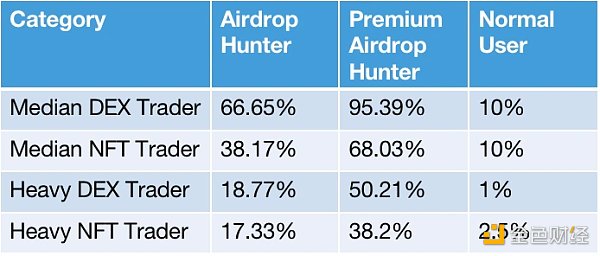
Airdrop Hunters’ Tag on X-explore
-
Median Dex Trader: Users whose trading volume on DEX is in the top 10%
-
Median NFT Trader: Users whose trading volume on NFT is in the top 10%
-
Heavy Dex Trader: Users whose trading volume or number of trades on DEX is in the top 1%
-
Heavy NFT Trader: Users whose trading volume or number of trades on NFT is in the top 2.5%
These data show that the activity of airdrop hunters in the cryptocurrency market is higher than that of ordinary users. They demonstrate higher enthusiasm for trading digital assets, particularly in DEX and NFT transactions.
2. Ethereum First Active Time
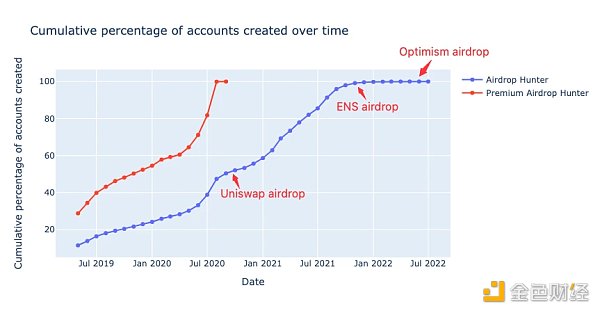
Airdrop hunters’ first active time on Ethereum (cumulative)
By combining the airdrop time of on-chain projects and the first active time of airdrop hunters on Ethereum, we found that most airdrop hunters are actually early users of Ethereum. When airdrops were conducted on Uniswap (September 2020), more than half of the airdrop hunters had already become active on Ethereum. The distribution of the first active time of premium airdrop hunters is also significantly earlier than that of ordinary airdrop hunters.
3. Ethereum Activity
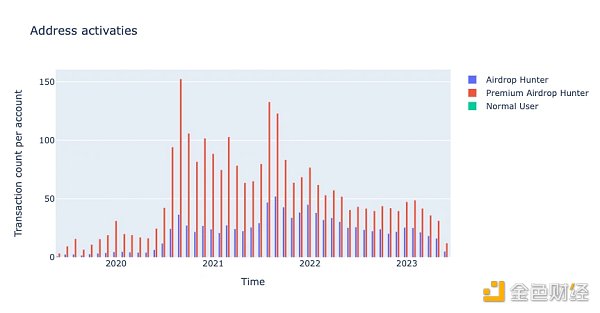
Airdrop hunters’ activity on the Ethereum chain
We randomly sampled over 30,000 user accounts created before June 2021 and compared their activity with that of airdrop hunters. As shown in the graph, airdrop hunters are active users on Ethereum. Premium airdrop hunters conduct an average of over 50 transactions per month on Ethereum, while ordinary airdrop hunters have over 21 transactions per month. In comparison, the randomly sampled addresses have an average of only 0.16 transactions per month on Ethereum. This result emphasizes the enthusiasm and activity of airdrop hunters in on-chain activities, as they significantly exceed ordinary users in terms of transaction volume.
4. Performance after Project Airdrops

Airdrop hunters’ OP activity
We tracked the performance of users who received airdrops (including both ordinary users and airdrop hunters) after five project airdrops and found that the activity of all users showed a downward trend, especially for ordinary users. Airdrop hunters consistently showed higher activity levels than ordinary users during any time period.
Optimism is an exception: Before the Optimism airdrop, the activity level of ordinary users on the OP chain actually exceeded that of premium airdrop hunters. However, after the Optimism airdrop, the activity level of ordinary users still showed a downward trend. In contrast, the activity level of premium airdrop hunters on the OP chain increased after receiving the airdrop, and in the following month, their activity level surpassed that of ordinary users. Through our in-depth analysis, we found that this is mainly because the OP airdrop rules take into account the activity level of addresses on Ethereum. The results show that many premium airdrop hunters who were previously inactive on the OP chain became interested in OP after receiving the airdrop and actively interacted with different projects on the OP chain.
5. Summary
After sampling and analyzing the detailed on-chain behavior of many airdrop hunters’ addresses, we have further confirmed the analysis mentioned above. The on-chain activity characteristics of airdrop hunters can be summarized as follows:
-
Most airdrop hunters are enthusiastic about DEX or NFT trading.
-
Airdrop hunters are mainly composed of early users.
-
Airdrop hunters are significantly more active than ordinary users.
-
Well-designed airdrop rules can have a positive impact on airdrop hunters.
What is the “next target” of short sellers?
After having a certain understanding of the airdrop hunter community, we are curious about their “next target”. Which projects do they still favor? To answer this question, we have studied the projects they participate in and their behavior patterns when interacting with these projects through on-chain data. While helping readers understand which projects on the chain are worth interacting with, we further reveal the methods by which airdrop hunters interact with these projects. It is worth mentioning that we have included these airdrop hunters in our monitoring, and X-explore will continue to monitor the latest dynamics of these airdrop hunters in the future, bringing more valuable analysis to everyone.
We have classified the projects preferred by airdrop hunters into several categories, and each category is sorted by the participation rate of premium airdrop hunters, selecting projects with a participation rate greater than or equal to 25%. If a project has multiple contracts, we choose the one with the highest participation rate. The following are the categories of tracks and projects:
1. Decentralized Finance (DeFi): Uniswap, SushiSwap, 0x, Metamask Swap, Balancer, 1inch, LianGuairaswap, Aave, Rarible, InstaDApp, dydx, Compound
2. Non-Fungible Tokens (NFTs): Opensea, Blur, LooksRare, X2Y2, Foundation
3. Layer 2 Solutions and Cross-Chain Protocols: Arbitrum, Polygon, ZkSync lite, Optimism, HOP, ZkSync Era, Starknet
4. Decentralized Applications (DApps): DeBank
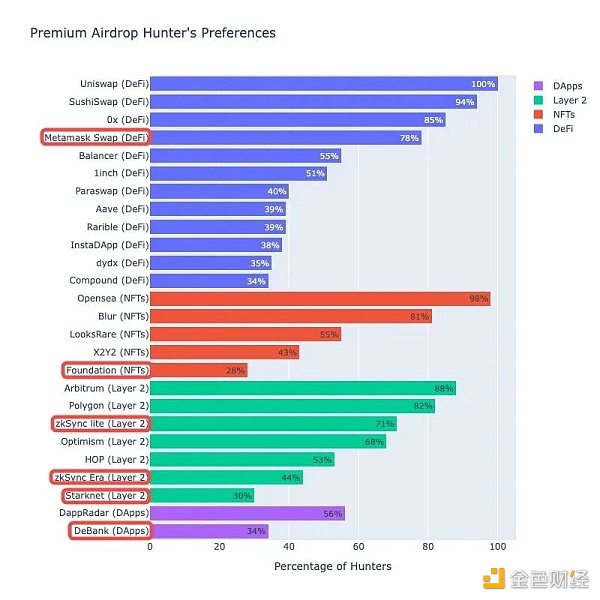
Airdrop Hunters’ Preference
Among them, the projects highlighted in bold and red boxes indicate that the project has not yet conducted airdrops and has not yet issued coins. We will further analyze the behavior of airdrop hunters in these projects.
1. DeFi Track: Metamask: Swap Router
After our analysis, the total trading volume of airdrop hunters on Metamask is 191,438,051 USD, and the median trading volume of airdrop hunters is 1,255 USD. In addition, after excluding airdrop hunters from the total of 1,811,782 users on Metamask Swap, and randomly selecting the same number of other Metamask users from these 1,776,303 addresses, we found that their trading volume on Metamask is 205,673,503 USD, and the median trading volume is 474 USD. Although there is not much difference in the total trading volume, the median indicates that the trading volume of airdrop hunters is more evenly distributed, and most airdrop hunters have a trading volume greater than 1,000 USD.
Below are the trading pairs and related information for airdrop hunters and other users:

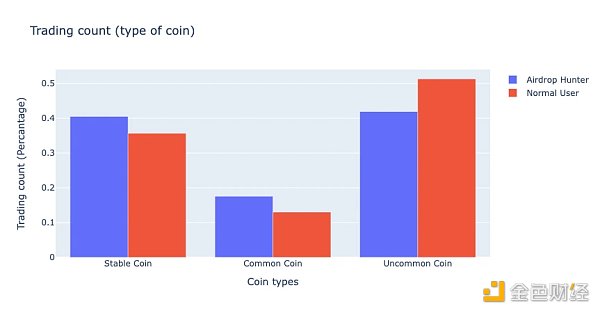
(Common Coin refers to the coins with a market value ranking within the top 50 on CoinMarketCap, excluding stablecoins)
We found that airdrop hunters have very similar preferences for trading pairs on Metamask Swap and Uniswap. Compared to general users, airdrop hunters tend to trade stablecoins and mainstream coins such as USDC, USDT, WETH, DAI, WBTC, etc. These stablecoins and mainstream coins have higher liquidity and relatively stable prices, reducing the risk of trading. In addition, stablecoins and mainstream coins are also easier to transfer and trade between multiple trading platforms, increasing the flexibility of funds. This indicates that while airdrop hunters pursue profits, they also pay attention to risk control and flexible use of funds.
2. NFT Track: Foundation
We randomly sampled three airdrop hunters who participated in Foundation and found that their interactions on Foundation are not frequent. Most of their interactions involve placing bids on NFTs. However, two of the airdrop hunters actually made purchases of NFTs.
Airdrop Hunters’ behavior on Foundation
The Blur airdrop rules can give us some inspiration. Although some people did not purchase NFTs, they were able to obtain substantial airdrop rewards simply by exchanging coins and placing bids. Therefore, when interacting with project parties, we can try different functions of the project, actively participate, and try the project, and there may be unexpected surprises.
3. Layer 2 Solutions Track: zkSync lite, zkSync Era, Starknet zkSync(lite)
We randomly selected 4 airdrop hunters who bridged to zkSync lite. Next, we will use screenshots to explain the behavior patterns of these airdrop hunters on zkSync. If you want to know the complete behavior of airdrop hunters, please refer to the link we provided.
Airdrop Hunter 1:
Hunter 1’s first transaction occurred on 2021-11-01. He transferred a sum of money from another address. It is worth noting that his two swap transactions occurred only 15 seconds apart. He first exchanged ETH for USDT, and then exchanged USDT back to ETH. This rapid and consecutive trading behavior appears to be an attempt to increase activity.
Airdrop Hunter 1 (1)
I have omitted several cross-chain and address transfer operations. Hunter 1 performed a similar transaction operation (the protagonist changed from USDT to USDC) 8 months ago, on 2022-10-20, with a time interval of about 30 seconds.
Airdrop Hunter 1 (2)
Two months ago, the address performed a series of similar transaction operations (a total of 39 transactions), with each transaction interval approximately 20 seconds: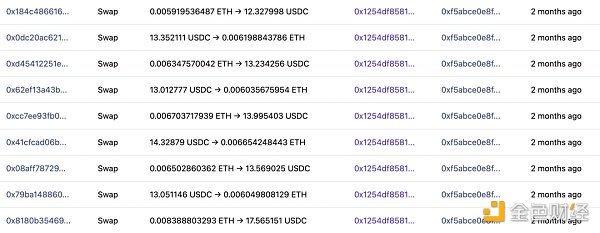
Airdrop Hunter 1 ( 3)
Airdrop Hunter 2:
Hunter 2’s behavior is relatively simple. It cross-chained from the mainnet on November 10, 2021, and made its first transaction three months ago (exchanging ETH for USDC). Then the address had another transaction cross-chained from the mainnet and has had no other transactions since then. 
Airdrop Hunter 2
Airdrop Hunter 3:
Hunter 3’s behavior on zkSync lite is very similar to that of Hunter 1. They both cross-chained from the mainnet to zkSync at the end of 2021, then used zkSync’s transaction function to convert ETH to stablecoins, and then converted the stablecoins back to ETH (ETH USDT). They also made multiple transactions with a time interval of about 20 seconds. This may indicate that they are trying to increase activity by frequent trading behavior. 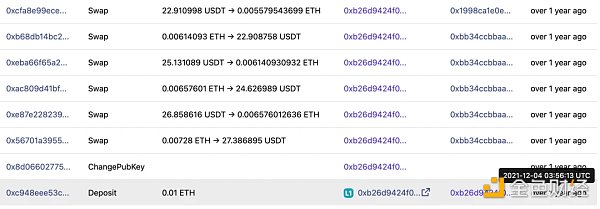
Airdrop Hunter 3 ( 1)
Skipping over several sporadic transactions in between, Hunter 3 performed a similar operation again on May 25, 2022, with a similar time interval of about 20 seconds. 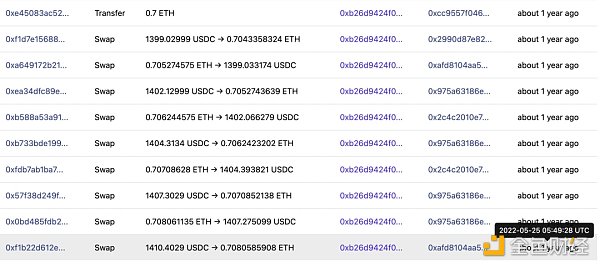
Airdrop Hunter 3 ( 2)
Airdrop Hunter 4:
Hunter 4 made several transactions after cross-chaining operations, and then performed another cross-chaining operation after some time. This behavior pattern may indicate that they are trying to maintain a certain level of activity on the zkSync chain and transfer and allocate funds when needed. 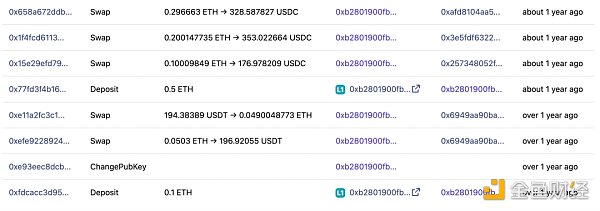
Airdrop Hunter 4
zkSync Era: In addition to zkSync lite, many airdrop hunters also choose to cross-chain to the mainnet of zkSync Era for interaction. It is worth noting that on the first two days of zkSync Era’s mainnet launch, a considerable number of airdrop hunters started interacting here, which reflects their high attention and active participation in the zkSync Era project.
Airdrop Hunter 1:
Airdrop Hunter 1 exhibited almost the same behavior pattern on zkSync lite and zkSync Era. After zkSync Era went live on March 24, 2023, Airdrop Hunter 1 immediately performed a cross-chaining operation on the second day, demonstrating a high level of attention and rapid response to this new project. Then they used the SyncSwap contract to perform currency exchange operations. 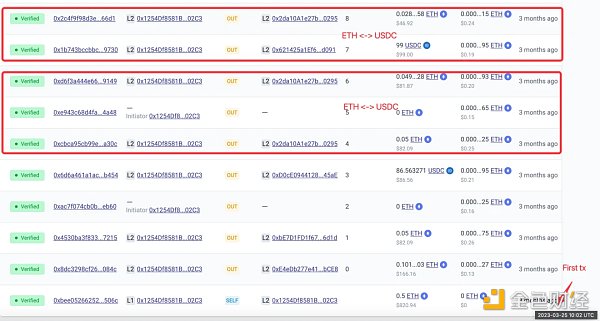
Airdrop Hunter 1 ( 1)
Airdrop Hunter 1 took similar trading behavior to increase activity seven days after the first interaction (2023-04-02). This timing seems very clever, raising suspicion that they are trying to increase activity in different weeks. 
Airdrop Hunter 1 ( 2)
Airdrop Hunter 1’s last operation on zkSync Era occurred a month ago (2023-05-19), and this operation was still using SyncSwap to exchange ETH and USDC. 
Airdrop Hunter 1 ( 3)
Airdrop Hunter 2:
Airdrop Hunter 2 cross-chain to zkSync Era on the same day the mainnet goes live. Similar to Airdrop Hunter 1, it demonstrates a high level of attention and activity towards the project. Airdrop Hunter 2’s multiple transactions on zkSync Era are all conducted through the Mute project. Unlike Airdrop Hunter 1, which exchanges between different currencies, Airdrop Hunter 2 exchanges ETH to ETH through contracts. This approach allows for lower transaction fees and mitigates the risk of price fluctuations, leaving a trace of activity on zkSync.
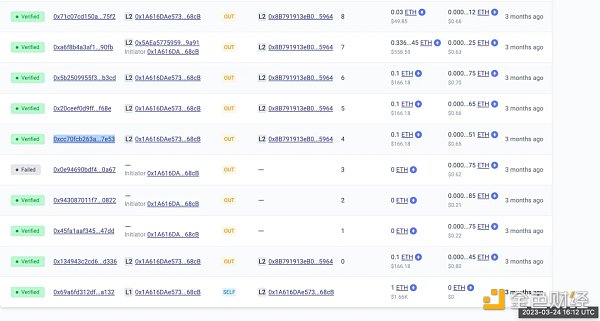
Airdrop Hunter 2
Airdrop Hunter 3:
Airdrop Hunter 3 cross-chains to zkSync Era on the same day (2023-03-25) and operates on the chain in a similar manner to Airdrop Hunter 1. The only difference is that Airdrop Hunter 4 uses the SLianGuaiceFi project to exchange between ETH and USDC.
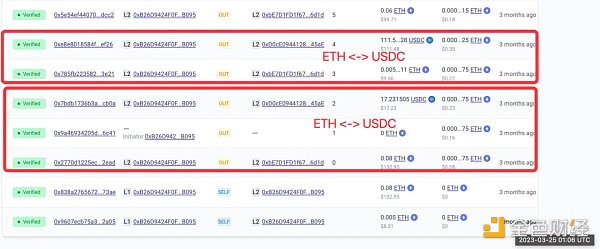
Airdrop Hunter 3 ( 1)
A week after the first interaction (2023-04-03), Airdrop Hunter 3 returns to zkSync Era. This time, Airdrop Hunter 3 uses SyncSwap instead of SLianGuaiceFi. While boosting activity, Airdrop Hunter 3 also participates in multiple projects on zkSync Era.

Airdrop Hunter 3 ( 2)
Airdrop Hunter 3 continues with transfers and other activities. It also participates in the iZUMi project and conducts transactions between ETH and ETH. It is worth noting that this address has multiple outgoing transactions on 2023-05-15.
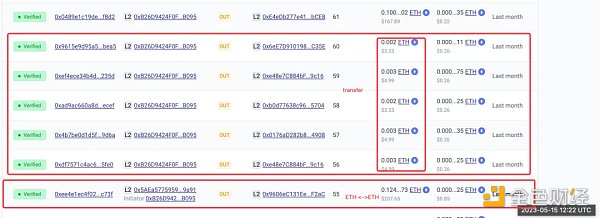
Airdrop Hunter 3 ( 3)
StarkNet: Since there are fewer Airdrop Hunter addresses cross-chained to StarkNet, and the transaction behavior of Airdrop Hunters is similar to zkSync, we will choose a representative address for analysis and examples.
Airdrop Hunter:
1. About two months ago (2023-04-12), the Airdrop Hunter cross-chained to StarkNet and used the myswap project on the same day to trade between ETH and USDC.
2. On StarkNet, the Airdrop Hunter also minted some NFTs.
3. 15 days ago (2023-06-01), the Airdrop Hunter conducted a trade between ETH and USDT through myswap.
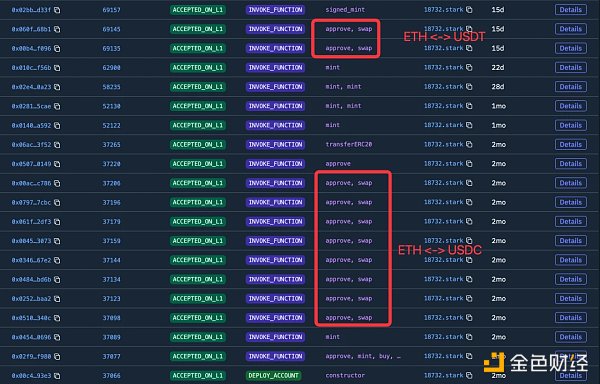
Airdrop Hunter on StarkNet
4. Dapp Track: DeBank
DeBank is a decentralized finance (DeFi) data analysis and asset management platform that provides users with a panoramic view of their investments and debts in different DeFi projects. It also offers real-time project data, transaction records, and risk assessments to help users make informed investment decisions. DeBank is also expanding its DeFi business, including swap functionality, and the community is eagerly awaiting DeBank’s airdrop. However, most of the premium airdrop hunters and community members who follow the DeBank tutorial have only registered on DeBank and have not used DeBank’s swap feature like in the airdrop tutorial. The following shows how premium airdrop hunters interact with DeBank:

Airdrop Hunter’s operation on Debank (1)

Airdrop Hunter’s operation on Debank (2)
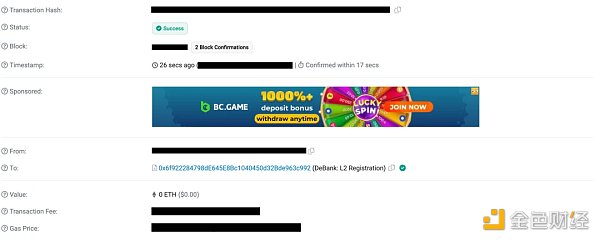
From the behavior of the Airdrop Hunter, it seems more like registering on DeBank to enable analysis functions for on-chain analysis, rather than being an obvious user with the intention of taking advantage of airdrops. They use DeBank’s Swap function to increase their chances of potential airdrop rewards.
5. Summary
After analyzing the Airdrop Hunter’s project selection on-chain, we discovered the key driving factors behind their project choices:
1. Industry influence: Most hunters tend to choose projects that have widespread influence and recognition in their respective fields. Apart from DeBank, these projects have had over an astonishing 700,000 contract interactions on Ethereum.
2. Preference for Layer 2 solutions: Airdrop Hunters clearly lean towards selecting Layer 2 projects such as Arbitrum, zkSync lite, and zkSync Era. Layer 2 solutions provide faster transaction confirmation speeds and lower transaction fees, which is crucial for hunters who frequently participate in DeFi and NFT projects.
Through in-depth analysis by X-explore, we found that while Airdrop Hunters on Arbitrum and Optimism exhibit high-quality behavior patterns, those on zkSync and Starknet tend to engage in transaction volume and activity manipulation. This phenomenon is closely related to the completeness of the on-chain ecosystem. Optimism and Arbitrum have had time to develop and accumulate before the announcement of airdrops, while zkSync has been continuously generating interest in airdrops since the launch of Era mainnet. This finding forces us to rethink: what is the true meaning of airdrops? How can we find truly valuable users in the process of formulating airdrop rules, rather than those who engage in a large number of meaningless interactions solely for the purpose of taking advantage of airdrops? These are the questions that project teams need to delve into.
Insights from the Airdrop Hunters
1. Airdrop Hunters are primarily genuine and high-quality users: They actively participate in various blockchain projects, engage in cross-chain transactions, and maintain stable activity across multiple platforms. Although there has been heated discussions about “witch addresses,” we have not found any obvious “freeloaders” behavior among Airdrop Hunters. On the contrary, their behavior patterns reflect deep involvement in projects and a passion for the blockchain world, rather than just seeking short-term airdrop rewards.
2. When formulating airdrop rules, successful examples can be used as references: When analyzing the traces of Airdrop Hunters on Optimism, we found that many high-quality Airdrop Hunters received a significant amount of OP airdrops due to their activity on Ethereum, eventually becoming loyal users on the OP chain. Therefore, when formulating airdrop rules, project teams can take into account the behavior of Airdrop Hunters to ensure that airdrops are more effectively distributed to these types of high-quality users. This also helps project teams utilize airdrops as an incentive mechanism to enhance project participation and user loyalty.
3. Good airdrops need to meet two core conditions: reasonable airdrop rule design and complete ecosystem. With proper airdrop rules and a sound ecosystem, we have witnessed how high-quality users maintain sustained activity on Arbitrum/Optimism. However, if airdrop information is released hastily without a complete ecosystem, it may lead to the appearance of superficial prosperity, and even high-quality airdrop hunters on zkSync/Starknet may engage in activity boosting. In the upcoming X-explore article, we will delve into the behavior of low-quality users and “witch attacks” on ZkSync/Starknet, revealing the true situation beneath the surface prosperity.
We will continue to update Blocking; if you have any questions or suggestions, please contact us!
Was this article helpful?
93 out of 132 found this helpful
Related articles
- The higher the road, the taller the devil. Has the story of airdrops come to an end?
- All or Nothing’ The roller coaster ride of ScienceCoin, discussing the memes in the crypto community
- Survival Skills in the Cryptocurrency Dark Forest Wallet Security Strategies and Risk Level Management
- FastLane Atlas Protocol Use Case Analysis What is the potential for development?
- Why has friend.tech become popular?
- The Past and Present of OPNX – From Bankruptcy Alliance to Hundredfold Increase
- Exploring the Future of Web3 Social (Part 1) From 0 to 1 – Achieving Cold Start of Applications with Social Graphs.





